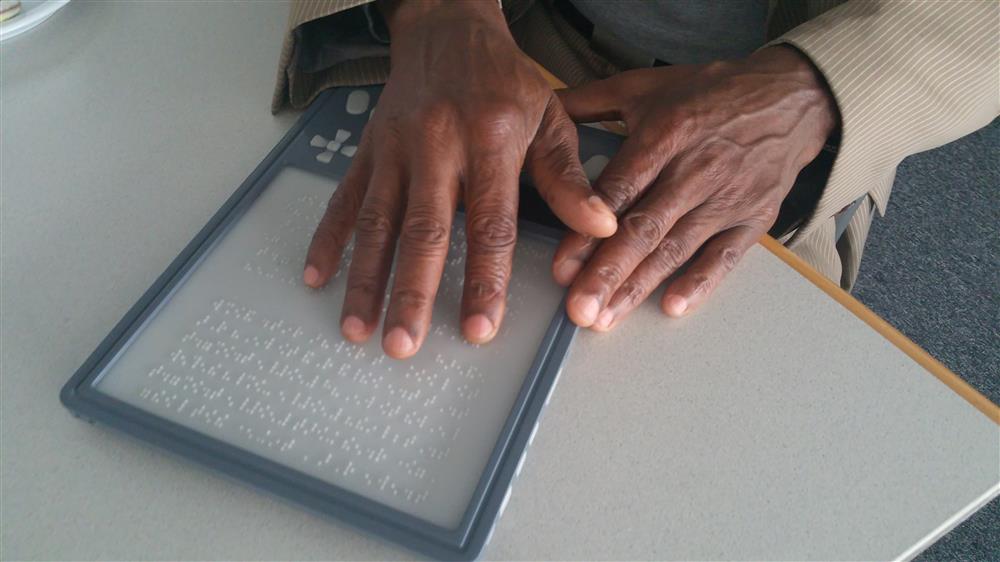A tablet that creates Braille, graphics, maps, and more
- Organization
- BLITAB Technology Gmbh
- Country of Implementation
- Austria
- First published
- 31.01.2016

Solution details
People
“BLITAB – the first tactile tablet for people with sight loss – creates a social impact through innovative technology as it renews Braille usage, increases Braille literacy rate among blind children, and as result will enable them to maintain gainful employment.” Ms. Kristina Tsvetanova, CEO, BLITAB
Problems Targeted
Despite the fact that only 1% of all published books are available in Braille, the format remains the only fundamental tool for the education and literacy of blind people. Touchscreen devices are accessible only via voice-over, and special Braille displays are extremely limited, bulky, and expensive (up to $15,000).
Solution, Innovation and Impact
BLITAB® is a next-generation affordable and multi-functional device for Braille reading and writing that displays one whole page of Braille text without any mechanical elements. BLITAB® is like an e- reader that, instead of using an LCD-screen, forms small bubbles on the surface that are haptic and stable enough to be touched and read by the finger. BLITAB® generates 13–15 lines in Braille code at a time, while the corresponding technology allows text files to be instantly converted into Braille from USB sticks, web browsers, or NFC tags. Until now the technology has not been used in this particular market niche, and the application is already in patent procedure. For the first time, pictures, and graphics – such as like maps and building plans – can be presented on a device with tactile relief, opening up a completely new world of content for the blind and visually impaired.
Funding, Outlook and Transferability
The BLITAB project is a good example of how ICT technology drives social change and inclusion, and contributes to a higher literacy rate among children with disabilities. It is a replicable model and can be adopted by many organizations and countries due to the low cost of the technology and the readiness of ministries to support it. Financing the project and its distribution are the main barriers to further dissemination, and consequently BLITAB is looking for potential partners in every country and has already established a global network of potential distributors.
Media
Related information
- Connections
- 1
-
Organization